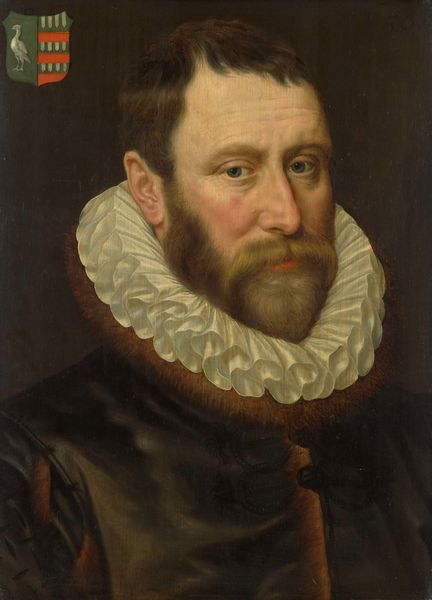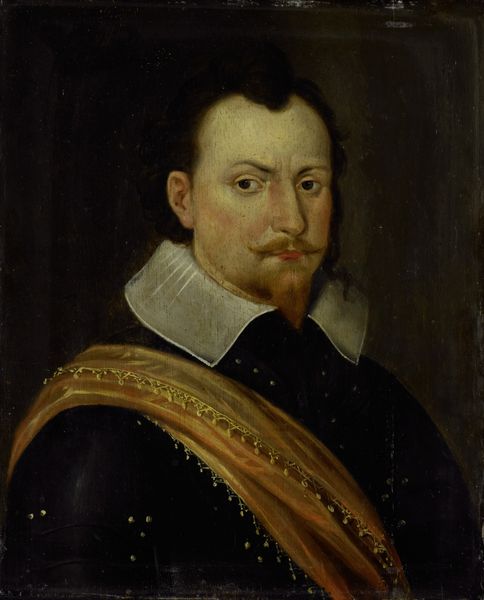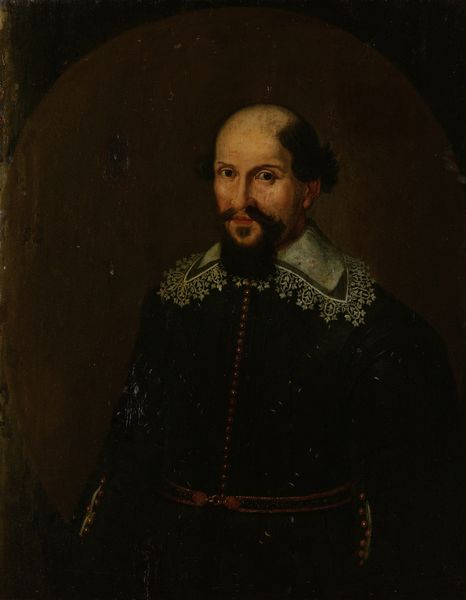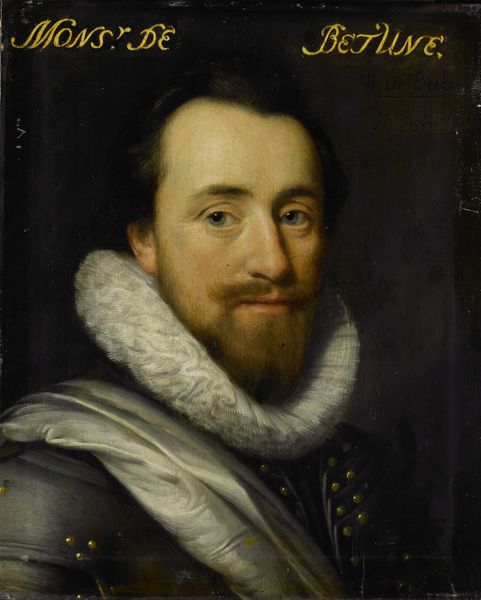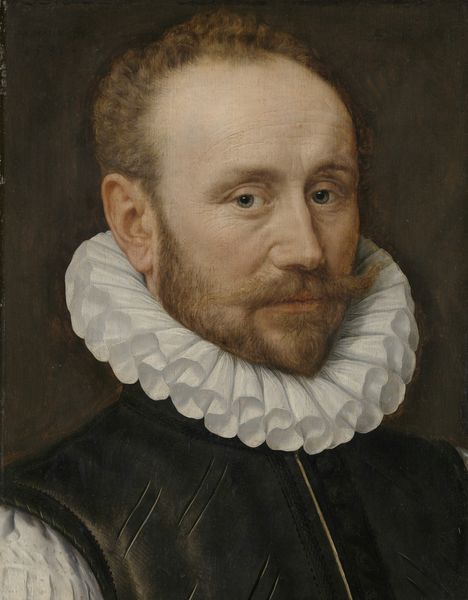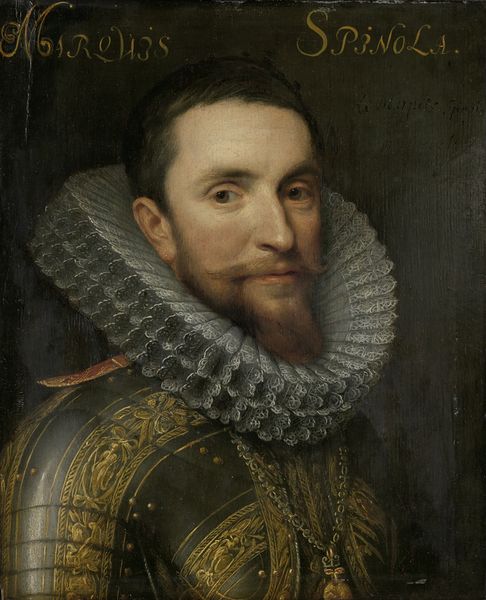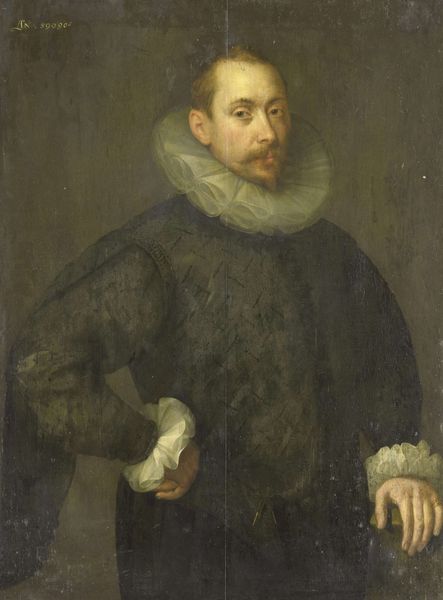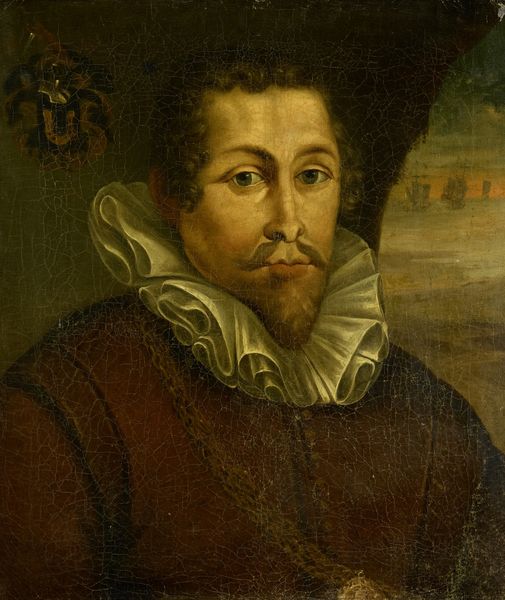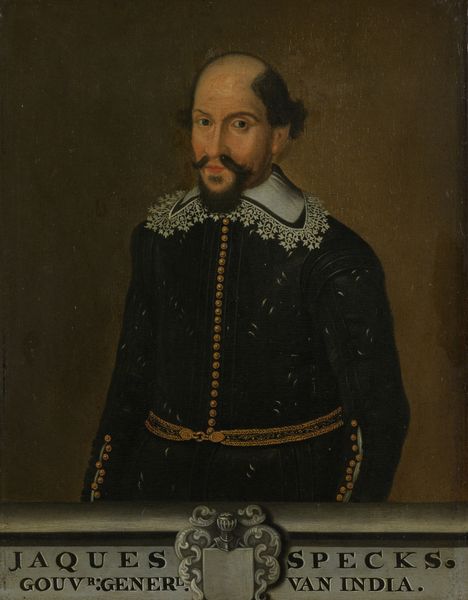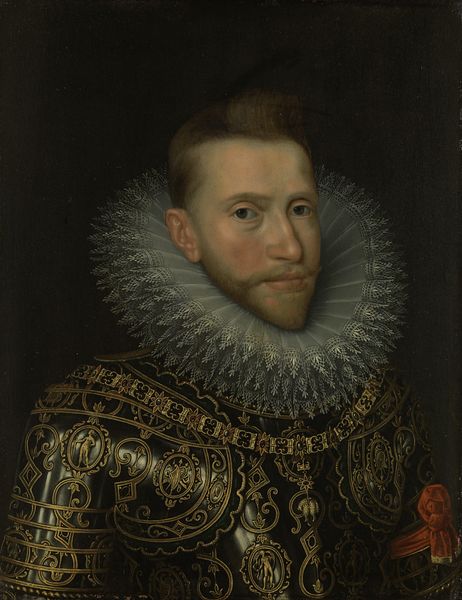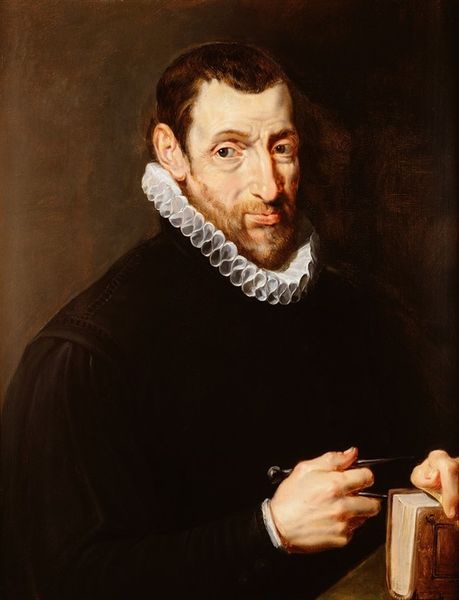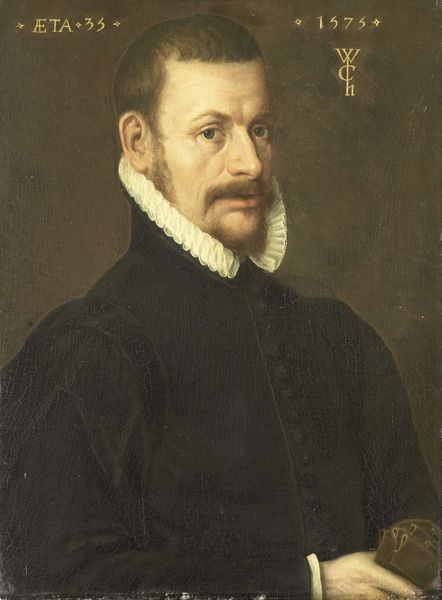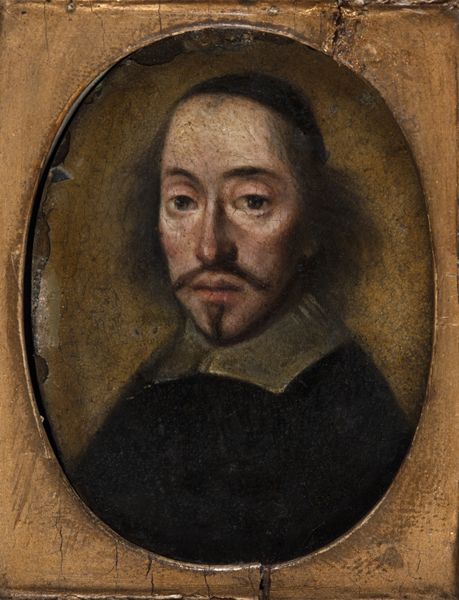
Portrait of François de la Noue (1531-91), Lord of Teligny, called ‘Bras de Fer’ and ‘le Bayard Huguenot’ c. 1609 - 1633
0:00
0:00
painting, oil-paint
#
portrait
#
baroque
#
low key portrait
#
portrait image
#
portrait
#
painting
#
oil-paint
#
portrait subject
#
figuration
#
portrait reference
#
portrait head and shoulder
#
history-painting
#
facial portrait
#
portrait art
#
fine art portrait
#
celebrity portrait
Dimensions: support height 29.9 cm, support width 24.1 cm, support thickness 1 cm, outer size depth 3.4 cm
Copyright: Rijks Museum: Open Domain
Curator: Welcome. Let’s delve into this striking oil portrait, "Portrait of François de la Noue," painted sometime between 1609 and 1633. An anonymous work, yet brimming with character. Editor: Yes, it’s quite captivating! There is a quiet intensity in his eyes. What really strikes me is how dark it is; he almost seems to emerge from the shadows. What do you see in this piece? Curator: I see a carefully constructed representation of power and identity within the tumultuous context of the French Wars of Religion. Look at his armor, barely visible beneath the darkness. Consider the historical weight he carries, signified by the nicknames ‘Bras de Fer’ and ‘le Bayard Huguenot’. How does this portrait, shrouded in low key lighting, engage with notions of heroism and martyrdom during a period of deep religious conflict? Does it glorify, or perhaps subtly critique, the violence of the era? Editor: I hadn't thought about the religious context so explicitly. So, the darkness, beyond just being a stylistic choice, could also symbolize the somber reality of war? Curator: Precisely. The Baroque period certainly employed chiaroscuro for dramatic effect. However, within the sphere of the religious conflicts, how might the shadowy aesthetic portray trauma, oppression, and resilience? How does this intersect with the history of the representation of powerful figures, often depicted in idealized and heroic terms? What is suggested when we have this... muted and stark vision of leadership? Editor: That is a compelling perspective! I now appreciate how the artistic choices might actually challenge our conventional understanding of portraiture. Curator: Art serves as a mirror, reflecting societal values while simultaneously questioning them. Understanding the history allows us to look critically at that reflection. Editor: Thank you. I am definitely leaving this artwork with a far broader understanding of portraits. Curator: Indeed, and may it lead to richer conversations and greater discoveries as we delve into the dialogues fostered by art.
Comments
No comments
Be the first to comment and join the conversation on the ultimate creative platform.

